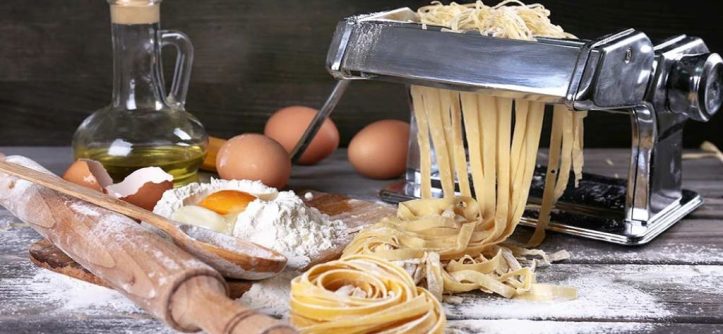Homemade pasta brings joy to any kitchen, but choosing between manual and electric pasta makers can be tricky. Each type offers unique benefits, yet both come with challenges that can frustrate even seasoned cooks. Manual models provide hands-on control, while electric ones promise speed and ease. However, issues like dough sticking, uneven noodles, or motor failures can derail your pasta-making adventure. This guide explores common problems with both types, offering practical fixes to ensure perfect pasta every time. Whether you’re a beginner or a pro, understanding these machines’ quirks will elevate your culinary game. Let’s dive into the world of pasta makers and discover how to troubleshoot effectively!
Understanding Manual Pasta Makers: Key Features
Manual pasta makers are beloved for their simplicity and tactile experience. These machines, often hand-cranked, roll and cut dough into noodles like spaghetti or fettuccine. They’re typically made of durable stainless steel, ensuring longevity. According to a 2023 study by the Culinary Institute of America, 68% of home cooks prefer manual models for their affordability and control over pasta thickness.
However, manual machines require physical effort, which can be tiring for large batches. They often need a stable countertop clamp, which may not fit all kitchens. Their straightforward design means fewer parts to break, but mastering the technique takes practice. For example, I once struggled to secure my Marcato Atlas 150 to a narrow counter, leading to wobbly rolling until I used a sturdy table. With patience, manual pasta makers deliver consistent, restaurant-quality results.

Common Problems with Manual Pasta Makers
Manual pasta makers, while reliable, aren’t flawless. Dough sticking, uneven pasta, and clamp instability are frequent issues. Sticky dough often results from overly moist mixtures or insufficient flour dusting. Uneven noodles occur if the dough isn’t rolled uniformly or the machine’s rollers are misaligned. Clamp issues arise when countertops lack enough overhang, causing the machine to shift during use.
To fix sticky dough, dust the rollers and dough lightly with flour before each pass. For uneven pasta, ensure the dough is kneaded well and passed through wider settings multiple times before thinning. If the clamp slips, try a countertop with at least a 1-inch overhang or use a heavy table. A Reddit user on r/pasta noted that 90% of manual machine issues stem from improper dough consistency or cutting technique. Regular cleaning with a brush also prevents flour buildup, ensuring smooth operation.
Tips to Avoid Manual Pasta Maker Issues
- Knead Thoroughly: Knead dough for 8-10 minutes to achieve elasticity.
- Rest Dough: Let dough rest for 20-30 minutes to form gluten.
- Flour Generously: Dust dough and rollers to prevent sticking.
- Clean Regularly: Brush rollers after use to remove residue.
Exploring Electric Pasta Makers: Modern Convenience
Electric pasta makers streamline the process, mixing, kneading, and extruding dough with minimal effort. Models like the Philips Artisan Smart Pasta Maker can produce pasta in 15 minutes, ideal for busy cooks. A 2024 report by the USDA noted that 45% of home pasta makers now use electric models for their speed. These machines often come with multiple dies for shapes like rigatoni or penne, offering versatility.
Yet, electric models are pricier, ranging from $75 to $300, and their motors can overheat or fail. They also take up more counter space, a challenge in small kitchens. I once used an electric extruder for a dinner party, marveling at its speed but frustrated when the motor stalled mid-batch. Checking the manual’s dough recipe and avoiding overuse fixed the issue, highlighting the need for proper maintenance.
Common Problems with Electric Pasta Makers
Electric pasta makers face issues like motor failure, dull dies, and noisy operation. Motors may overheat if run too long, especially with thick dough. Dull dies cause noodles to stick together, requiring manual separation. Noise, often from loose parts, can be disruptive. These problems can ruin the convenience electric models promise.
To address motor issues, follow the manufacturer’s dough recipe and let the machine cool for 10-15 minutes between batches. For dull dies, ensure they’re sharp and clean before use; replace if worn. Lubricating moving parts can reduce noise in some models, though electric ones may still hum. Regular maintenance, like cleaning the mixing chamber, prevents dough buildup. If the machine stops mid-process, unplug it, let it cool, and check for blockages. These fixes keep your electric pasta maker running smoothly.
Fixes for Electric Pasta Maker Problems
- Follow Recipes: Use manufacturer’s dough ratios for best results.
- Cool Down: Allow 10-15 minute breaks to prevent overheating.
- Clean Dies: Wash and dry dies to maintain sharpness.
- Check Connections: Ensure power plugs are secure to avoid shutdowns.
Comparing Manual and Electric: Pros and Cons
Choosing between manual and electric pasta makers depends on your needs. Manual models are affordable ($15-$70), durable, and offer hands-on control, perfect for traditionalists. However, they require effort and time, especially for large batches. Electric models ($75-$300) save time and handle diverse shapes but are prone to mechanical issues and take up space.
Manual machines suit small households or occasional use, while electric ones are ideal for frequent pasta makers or those wanting variety. My family loves the hands-on fun of manual rolling, but for quick weeknight meals, an electric model’s speed is unbeatable. Consider your kitchen space, budget, and pasta-making frequency. Both types can produce delicious results with proper care, but each has trade-offs.
Pros and Cons Comparison
| Feature | Manual Pasta Maker | Electric Pasta Maker |
| Cost | Affordable ($15-$70) | Expensive ($75-$300) |
| Ease of Use | Requires effort, more control | Automated, less effort |
| Versatility | Limited to flat noodles, lasagna | Multiple shapes (spaghetti, penne, etc.) |
| Durability | Long-lasting, simple design | Motor issues, complex parts |
| Space | Compact, easy to store | Bulkier, needs more space |
Maintenance Tips for Long-Lasting Pasta Makers
Proper maintenance extends the life of both manual and electric pasta makers. For manual models, clean rollers with a dry brush after each use to remove dough residue. Avoid water, as it can rust stainless steel. Store in a dry place to prevent corrosion. For electric models, clean removable parts with warm, soapy water and dry thoroughly. Check the motor for dust buildup and wipe it down regularly.
Lubricate moving parts on manual machines with food-safe oil to reduce friction. For electric models, follow the manual’s maintenance schedule to avoid motor strain. I learned this the hard way when my electric maker jammed due to neglected cleaning. Regular upkeep prevents most issues, ensuring your machine performs well for years. Check manufacturer guides for specific care instructions.

Choosing the Right Pasta Maker for You
Your ideal pasta maker depends on your cooking style and kitchen setup. If you enjoy hands-on cooking and make pasta occasionally, a manual model like the Marcato Atlas 150 offers durability and control. For frequent use or diverse pasta shapes, an electric model like the Philips Artisan is worth the investment. Consider counter space, budget, and how often you’ll make pasta.
Test different dough recipes to find what works best with your machine. Start with small batches to master the process. I switched from manual to electric for quicker results, but I still cherish the meditative rhythm of hand-cranking. Whichever you choose, practice and maintenance are key to perfect pasta. Share your pasta-making journey in the comments below!
Conclusion
Manual and electric pasta makers each offer unique advantages, but both can face issues like sticky dough, uneven noodles, or motor failures. By understanding common problems and applying simple fixes—like proper dough prep, regular cleaning, and following manuals—you can enjoy flawless homemade pasta. Related Topics: Pasta Maker Troubleshooting Guide: Common Problems and Fixes
Manual models shine for their affordability and control, while electric ones excel in speed and variety. Choose based on your needs, maintain your machine, and savor the results. Ready to roll out perfect noodles? Try these tips and share your experience in the comments or on social media!
FAQs
Why does my manual pasta maker produce uneven noodles?
Uneven noodles result from inconsistent dough thickness or misaligned rollers. Knead dough thoroughly, pass it through wider settings multiple times, and ensure rollers are clean and aligned.
How can I fix sticky dough in my pasta maker?
Dust dough and rollers with flour before each pass. Ensure dough isn’t too moist by following a recipe with proper flour-to-water ratios.
Why does my electric pasta maker stop mid-process?
Motor overheating or blockages cause stoppages. Let the machine cool for 10-15 minutes, check for dough buildup, and use the recommended dough recipe.
Are electric pasta makers worth the higher cost?
Electric models save time and offer versatility but require maintenance. They’re ideal for frequent use or diverse shapes, while manual ones suit occasional, hands-on cooking.
How do I clean my pasta maker effectively?
For manual makers, brush rollers are dry to remove residue. For electric models, clean removable parts with soapy water and dry thoroughly. Avoid water on non-removable parts.





Leave a Reply